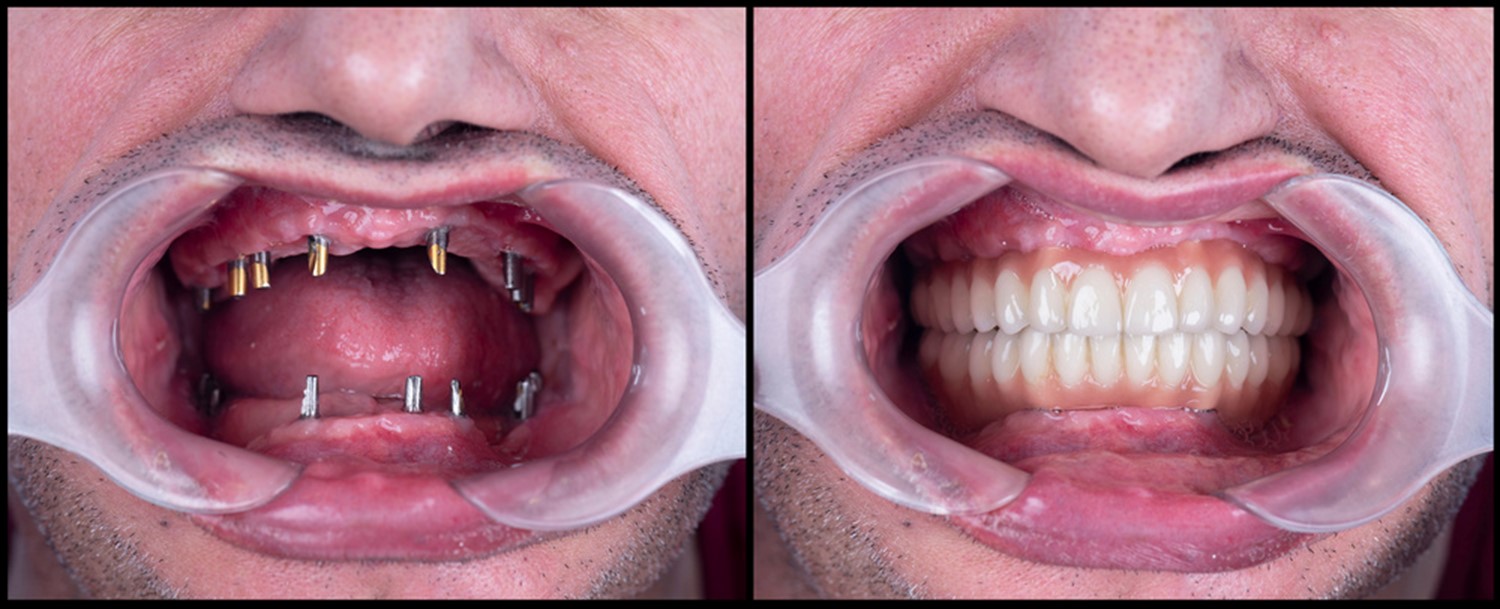Is the thought of losing your teeth terrifying? If so, you might consider implanting retained dentures. Before explaining what they are and how they work, here’s a discussion on the concept of dentures.
Overview
Implant-retained dentures are a type of denture secured in place by dental implants rather than being held in place by suction or a dental adhesive. These dentures are typically used in cases wherein traditional dentures aren’t feasible or aren’t providing sufficient support and stability.
Unlike conventional dentures, implant-retained dentures have numerous advantages, such as increased comfort, improved stability and better chewing ability. They also help to preserve bone structure, as the implants stimulate the jawbone and help to prevent the jaw from shrinking.
Implant-retained dentures provide the look and feel of natural teeth and can be used for both upper and lower teeth. They’re excellent options for those who have lost teeth due to disease, injury or other causes and are looking for a permanent solution.
With proper care, implant-retained dentures can last a lifetime, making them an excellent choice for anyone looking to restore their smile. The best way to ensure these implants serve you for longer is by brushing them daily, rinsing them after meals, soaking them overnight, visiting the dentist regularly and handling them carefully.
However, it’s important to note that implant-retained dentures aren’t right for everyone. As such, you must consult a dental professional to determine whether they’re a suitable option. Factors that may affect the feasibility of implant-retained dentures include the density and quality of the jawbone, the presence of other dental problems or health conditions and the patient’s overall oral health.
Implant Retained Dentures Procedure
The procedure for placing implant-retained dentures typically involves several steps. As such, the process may take several months to complete. Still, the specific steps applied will vary, depending on the patient’s unique situation and the type of implant-retained denture being inserted.
Here’s a general overview of the process:
- Initial Consultation
The dental surgeon will examine the patient’s mouth during the initial consultation, take x-rays and discuss the patient’s goals and expectations for treatment. The surgeon will also determine the number and location of the dental implants needed to support the denture.
- The First Surgery: Dental Implant Placement
The first surgery in the implant-retained denture procedure is the placement of dental implants. This surgery is typically performed by a dental surgeon or a specialist in oral and maxillofacial surgery.
The dental surgeon will make small incisions in the gum tissue during the surgery to expose the jawbone. The implants, which are small titanium screws, are then placed in the jawbone and secured with screws or other fasteners. The incisions are closed with sutures. The patient is given instructions on how to care for the implants and the surgical site during the healing period.
- Healing And Integration
During this period, the implants will heal and integrate with the jawbone, forming a secure foundation for the denture. Whether the implants were positioned in the upper or lower jaw will determine when the second treatment should be performed.
This step usually takes several months before the dentures can be placed, 5-6 months or later for the upper jaw and 3-4 months for the lower jaw. During this time, the bone and implants fuse biologically in an osseointegration process. The patient may be fitted with a temporary denture or a soft liner to protect the implants and provide some degree of chewing function while the implants heal.
- Second Surgery: Fabrication Of The Denture
The implant is ready for the next procedure when the osseointegration process is complete. The dentist would confirm whether the implants fused with bone by using an x-ray. Once the implants have fully healed, it’s time for the second surgery, which is much simpler than the first one.
In the second surgery, the dental surgeon will make small incisions in the gum tissue to expose the dental implants. The dentist will place a round piece of metal, called a collar or healing cap, on the head of each exposed implant, which will be worn for 10 to 14 days. The temporary denture may be modified or given another reline in the interim (relining).
The healing caps will be replaced with permanent abutments two weeks after the second procedure. Once the implants have fully healed, the dental laboratory will fabricate a custom-made denture that fits over the implants. The denture will be designed to fit the patient’s mouth and secured with special attachments that snap onto the implants. The permanent denture is made using a replica of your jaw and abutments.
- Try-in And Insertion
The try-in and insertion of an implant-retained denture is typically the final step in the implant-retained denture procedure. During this final stage, usually in month 5 or 7, depending on whether a denture needs to be made, you’re ready to try the new denture.
After the metal bar has been mounted on the abutments and aligned with the dental framework, the artificial teeth are then temporarily mounted on the framework in wax.
If everything is in order, the teeth would be permanently lodged in their proper place. The ball or bar attachments will be secured at this point.
You need to return for another visit to put in the completed denture. The denture may either snap into place or be clipped onto the bar.
Final Thoughts
Implant-retained dentures offer increased stability and a more natural feel compared with traditional dentures that are held in place with adhesives. They can be used to replace a complete set of missing teeth or to support a partial denture. Getting implant-retained dentures typically involves several steps that stretch to about five to seven months.
Care for implant-retained dentures properly by brushing them daily, rinsing them after meals, soaking them overnight, visiting the dentist regularly, and handling them carefully.






